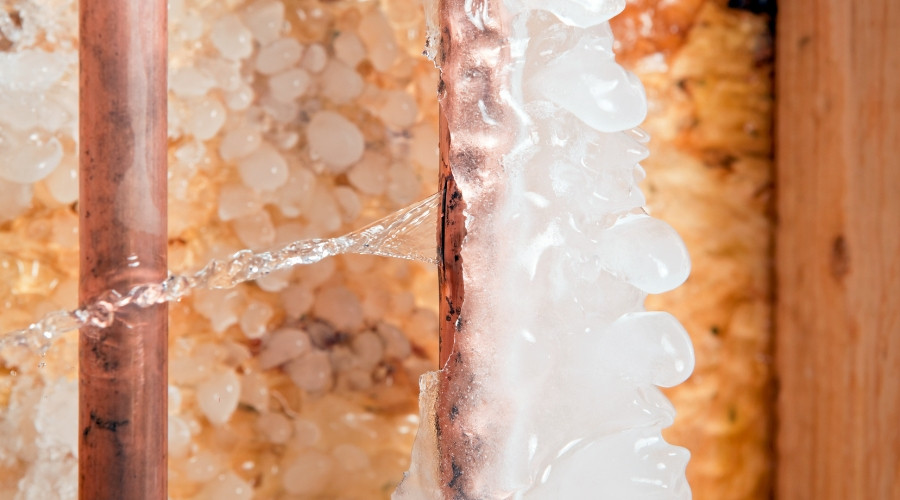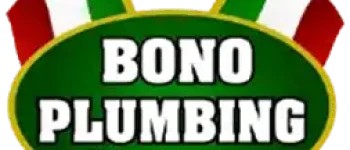Protect the Plumbing From the Cold This Fall and Winter
As temperatures drop, practical plumbing tips for colder temperatures can help prevent frozen or burst pipes and the water damage that follows. A few proactive steps taken before a cold snap make a measurable difference. This overview explains how to insulate vulnerable piping, maintain indoor warmth and air circulation around plumbing, and winterize outdoor faucets so systems continue to flow reliably through fall and winter.
Insulate the Pipes
 Frozen pipes are among the most costly winter plumbing problems, and pipe insulation is a straightforward way to reduce risk. Insulation creates a thermal buffer that helps piping stay above freezing, even when surrounding areas get very cold. Priority locations include attics, crawl spaces, garages, and unfinished basements—spaces where cold air moves freely and heat is limited. Pipes on exterior walls and in under-sink cabinets near outside walls are also more vulnerable and benefit from attention.
Frozen pipes are among the most costly winter plumbing problems, and pipe insulation is a straightforward way to reduce risk. Insulation creates a thermal buffer that helps piping stay above freezing, even when surrounding areas get very cold. Priority locations include attics, crawl spaces, garages, and unfinished basements—spaces where cold air moves freely and heat is limited. Pipes on exterior walls and in under-sink cabinets near outside walls are also more vulnerable and benefit from attention.
Selecting suitable materials improves protection. Foam pipe sleeves are easy to install on straight runs and provide consistent coverage; fiberglass wraps conform well around joints and irregular paths; and approved heat cable can add targeted protection in areas with persistent exposure. Before starting, measuring pipe diameter ensures a snug fit. Sections should be cut to length, fitted tightly, and seams secured so gaps don’t allow cold air to reach the pipe. Elbows, tees, and valves deserve extra care, as small openings around these fittings are common freeze points.
Installation rarely requires specialized tools. Systematically covering exposed piping, sealing openings where cold air enters, and adding insulation to nearby walls or rim joists work together to reduce heat loss. When combined with steady indoor temperatures, this layered approach can significantly lower the chance of freeze-related damage.
Keep the Heat on and Open Cabinets
 A consistent indoor temperature is one of the best defenses against frozen plumbing. Large setbacks during cold weather increase freeze risk inside wall cavities and unconditioned areas. Keeping the thermostat at a steady setting helps maintain warmth in the spaces surrounding supply lines and traps. Interior doors left ajar allow heat to circulate more evenly, and sealing drafts around windows, doors, and sill plates helps preserve that warmth where it’s needed most.
A consistent indoor temperature is one of the best defenses against frozen plumbing. Large setbacks during cold weather increase freeze risk inside wall cavities and unconditioned areas. Keeping the thermostat at a steady setting helps maintain warmth in the spaces surrounding supply lines and traps. Interior doors left ajar allow heat to circulate more evenly, and sealing drafts around windows, doors, and sill plates helps preserve that warmth where it’s needed most.
Cabinet doors beneath kitchen and bathroom sinks can trap cold air around pipes, particularly on exterior walls. Opening those doors during freezing conditions allows household air to reach the plumbing and raise the temperature a few degrees. In areas with prolonged, extreme cold, allowing a slow trickle of water through fixtures supplied by vulnerable lines can help keep water moving and reduce stagnation that contributes to freezing.
Additional simple steps add protection. Removing items that block warm airflow around under-sink plumbing, ensuring supply lines are not pressed tightly against exterior surfaces, and checking that crawl space vents and access panels are properly managed for winter all contribute to safer conditions. These measures cost little and pair effectively with pipe insulation to reduce freeze risk.
Winterize Outdoor Faucets
Outdoor faucets and exposed exterior piping face the harshest conditions and require winterization. Begin by disconnecting garden hoses and accessories so water does not remain trapped near the faucet. If an interior shutoff valve supplies each exterior spigot, close those valves, then open the outdoor faucets to let residual water drain. This step helps remove water from the section of pipe that runs to the exterior, reducing the chance of freezing inside the wall.
After draining, install insulated covers over each outdoor faucet to shield against wind and cold. Where accessible piping is exposed outdoors, additional protection with foam sleeves or approved heat cable can be considered, especially in areas with repeated freeze events. For properties without frost-proof sillcocks, timely winterization is even more important, as these older fixtures offer less inherent protection against freezing.
A quick inspection during cold spells helps confirm that covers remain tight and that no hoses or splitters have been reattached prematurely. Thoughtful winterization of exterior fixtures supports the entire plumbing system by removing common freeze points and lowering the likelihood of burst lines that can lead to interior water damage.
About Bono Plumbing
Bono Plumbing is a family-owned and operated plumbing company providing top-quality plumbing services in Moscow Mills and beyond. Call them today for prompt service and straightforward pricing on burst pipe repair in Moscow Mills, MO.




